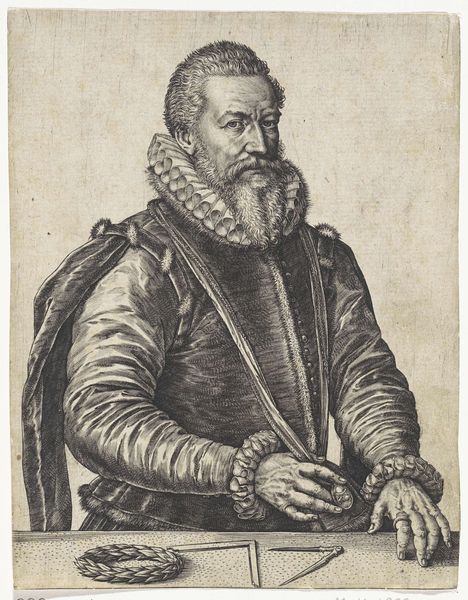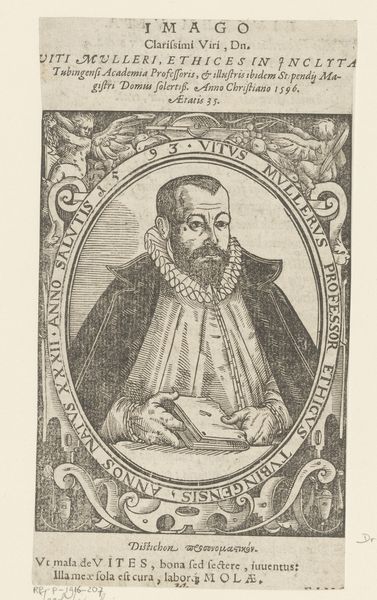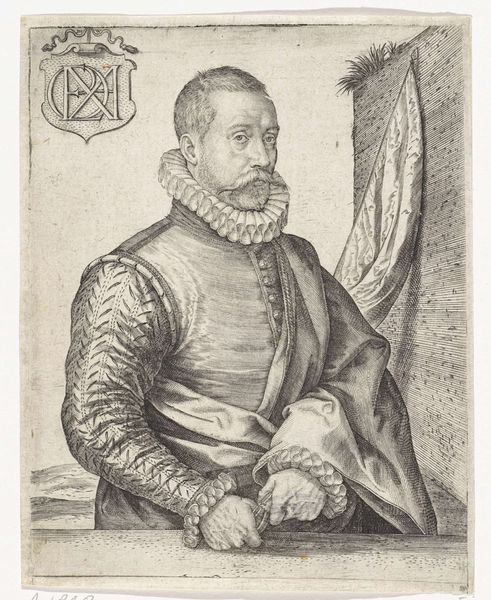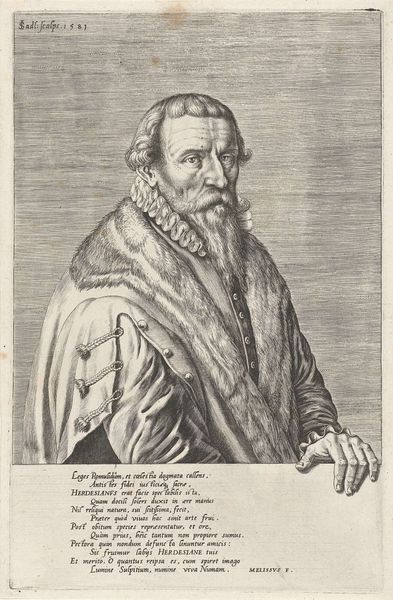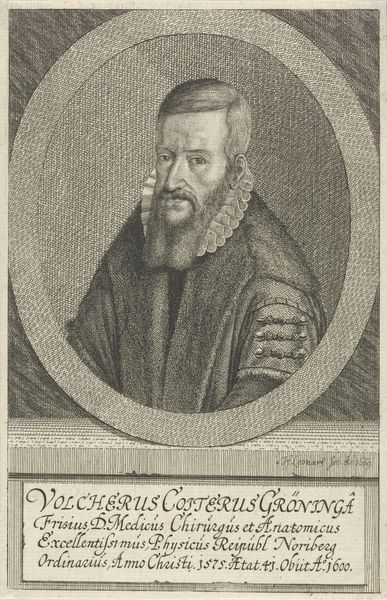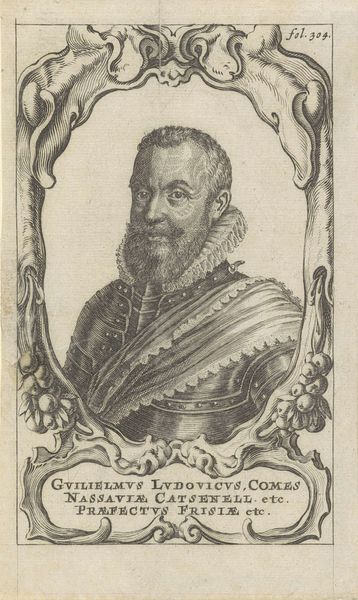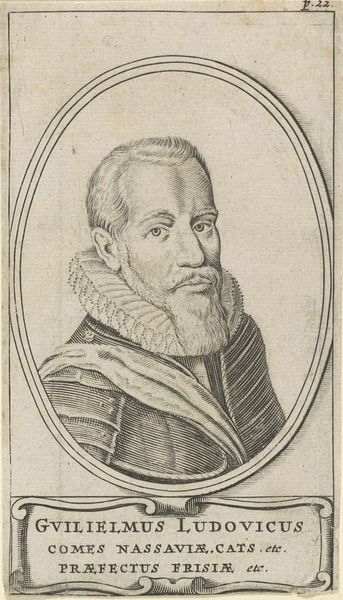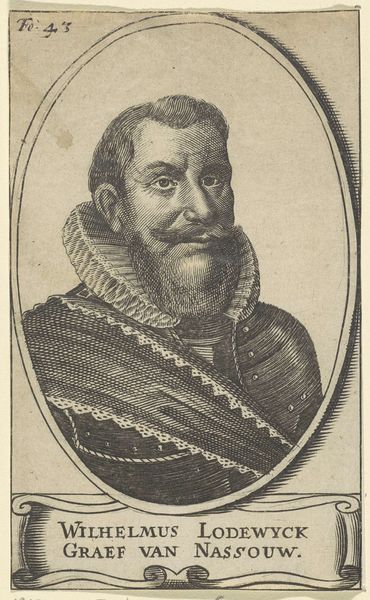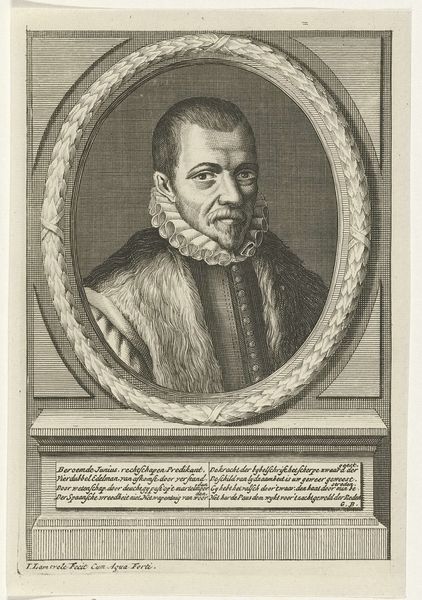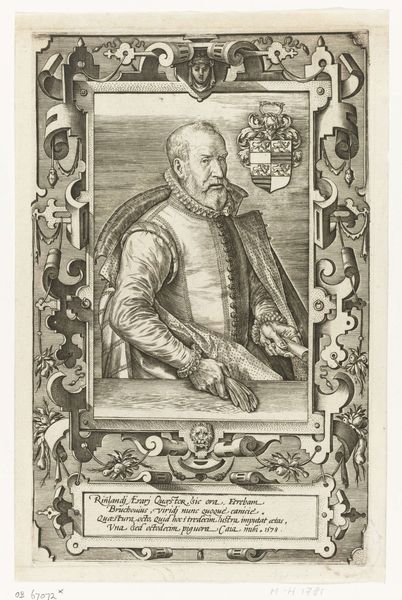
engraving
#
form
#
11_renaissance
#
line
#
portrait drawing
#
history-painting
#
northern-renaissance
#
academic-art
#
engraving
Dimensions: height 115 mm, width 85 mm
Copyright: Rijks Museum: Open Domain
Curator: This engraving, crafted in 1582 by Wierix, presents a 'Portret van Elcie Edouard Leon Mellema.' It's part of the Rijksmuseum's collection. My first thought? Intensely serious. Editor: The severity in his eyes is certainly palpable. The engraving’s tight lines add to that sense of restraint and contained power. But who was Mellema, and why immortalize him through this medium? Curator: Mellema was clearly a man of intellect and possibly wealth. Notice the tools he holds. His dress indicates a particular class identity and participation in a burgeoning mercantile culture across Europe at the time. The inscription ‘FIDE SED VIDE’ speaks to a period where faith and sight – or reason and empirical observation were increasingly intertwined. Editor: The positioning of his hand, and how deliberately it draws our attention to that tool...It feels very deliberate in showcasing his position as a thinker, but who might this work be *for*, who is supposed to see him, or *read* him, in this way? Curator: Such portrait engravings had several functions. Dissemination of images for political gain, establishing a social profile of its subjects as a signifier for status within their societal order. Editor: Absolutely, so portraits were being used to create lasting legacies in a visual manner. His gaze is unwavering and somewhat challenging—as if daring the viewer to question his authority. This engraving captures not just his likeness but also projects an ideology that needed upholding and actively displaying. Curator: And Wierix, as an engraver, was keenly aware of these political currents, navigating them while creating commercially viable works. He wasn’t simply rendering a likeness; he was actively shaping Mellema's public persona and securing commissions for the same process. Editor: This brings me back to what initially struck me. This isn't just about depicting Mellema, it’s also about how artistic choices, whether line thickness or inscribed mottos, contribute to building up layers that define public image, particularly, in relation to power and historical significance. The way the museum now presents the image is another stage, or continuation of it, no? Curator: Precisely. The image persists through reproduction within museum systems, shaping current understandings of people and culture. What was intended and how it exists can often be very different things, but both shape reception. Editor: Considering its historical journey alongside today's perspectives helps challenge how museums choose to narrate such images today. I feel encouraged to explore his broader life now, in the Netherlands and abroad. Curator: Agreed. Seeing how it influences or diverges from dominant narratives could certainly be illuminating.
Comments
No comments
Be the first to comment and join the conversation on the ultimate creative platform.
